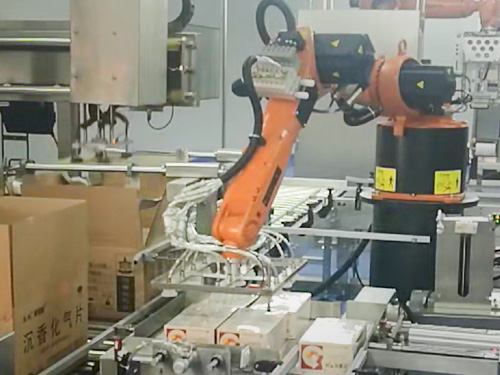Como as linhas de embalagem de caixa totalmente automáticas podem alcançar avanços de eficiência?

O salto de eficiência das linhas de embalagem de caixa totalmente automáticas depende da integração profunda de equipamentos centrais e tecnologias inteligentes. Entre estes, labeling machines play a critical role, injecting robust momentum into the packaging process through high-precision, high-speed automatic labeling capabilities. Below are four core strategies driving efficiency improvements:
1. High-Speed Labeling and Precision Positioning
Modern labeling machines utilize vision systems, servo control, or laser positioning to achieve labeling speeds of 300–800 units per minute with accuracy within ±0.1mm. For instance, high-speed labeling machines synchronize with moving objects on conveyor belts, enabling real-time label application while avoiding manual errors like misalignment or air bubbles. This ensures seamless continuity in the packaging process.
2. Intelligent Integration and Process Synchronization
Fully automated packaging lines integrate labeling, sorting, and sealing through industrial software (e.g., MES systems), forming a seamless smart network. Labeling machines equipped with visual inspection modules can detect label positions in real time, automatically reject defective products, and minimize downtime. Some advanced labeling machine manufacturers also offer modular designs for rapid switching between label types (e.g., heat-resistant or waterproof materials), adapting to diverse production needs.
3. Flexible and Modular Design
To accommodate small-batch, multi-variant orders, packaging lines adopt flexible layouts. For example, labeling machines can quickly adjust label positions and modes using preset parameters (e.g., 20 label specifications), paired with robotic arms to adapt to various box sizes. This flexibility reduces line-switching time and supports applications ranging from food packaging to electronic components.
4. Data Connectivity and Energy Efficiency
Smart packaging lines connect to ERP systems via IoT technology, recording labeling time, batch data, and enabling full-process traceability. Energy-saving solutions like low-energy servo motors and oil-free vacuum pumps reduce power consumption and noise during continuous operation, aligning with green production standards.
Conclusion: The efficiency leap of fully automatic box packaging lines stems from the synergy between automation technologies and industrial applications. By upgrading labeling machines for precision and intelligence, combined with flexible production and data-driven optimization, businesses can reduce costs, enhance productivity, and gain a competitive edge in fast-paced markets.
